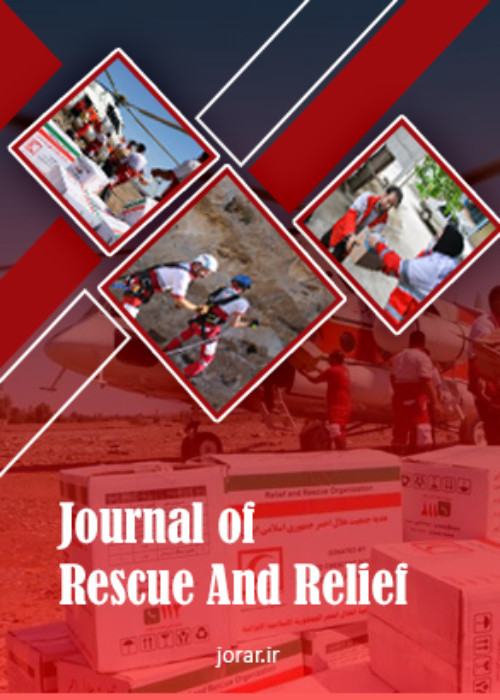The analysis of dust storm hazard occurrence and its variations trend in west & southwest of Iran
Author(s):
Abstract:
Background
Iran is a disaster prone country. Among the 40 different types of natural disasters، about 31 types have been identified in Iran. One of the most important consequences of climate change is to increase dust storm disaster occurrence in recent years that affect different sections of the society directly or indirectly. The sever impacts of the dust storm hazard are such as the increase in respiratory diseases، disorder in ground and air transportation، environmental destruction، pollution of agricultural products، and high density in health centers due to its side effects. Thus، this research aims to study the time distribution of dust storm occurrence as monthly، seasonal and annual and to determine variations and managing strategies in order to deal with this phenomenon based on the appropriate situations. Methods
In this applied and statistical-descriptive study، west and southwest of Iran were studied. Therefore، the monthly and annual data of dusty days were prepared and extracted from 11 meteorological synoptic stations from the meteorological organization by using Excel، descriptive statistical indices and Mann-Kendall method. Findings
The most critical condition of dust storm occurs in the southwest of Iran. The hottest months of the year، (July and August) are the most severe times of occurring this phenomenon. Dusty days started in six months (from April to September); and the frequent occurrence is in spring and summer in west and southwest regions respectively. Due to geographical situation and region structure، dusty days’ occurrence is not the same and increases from the north to south. The significant increase and decrease is not observed in dust storm phenomenon annual and monthly. There is only a significant increase in Ahvaz station (95%). Conclusion
This phenomenon involved west and southwest regions with different intensity from mid-spring to mid-autumn. The gradual increasing of this phenomenon got started from April to July. Evaluating the time of occurrence is annual and monthly. Lack of the significant increasing and decreasing trend in occurring long-term changes makes it a top priority for organizations to deal with natural disasters in order to have disaster management programs. Understanding this phenomenon and time distribution plays an effective role in decreasing of damaging impacts of this phenomenon before and during crisis in order to implement prevention programs and management programs especially in the field of health in critical areas in accordance with the geographical conditions.Keywords:
trend , southwest , west , dust storm , hazard , occurrence
Language:
Persian
Published:
Scientific Journal of Rescue Relief, Volume:6 Issue: 2, 2014
Page:
43
magiran.com/p1331520
دانلود و مطالعه متن این مقاله با یکی از روشهای زیر امکان پذیر است:
اشتراک شخصی
با عضویت و پرداخت آنلاین حق اشتراک یکساله به مبلغ 1,390,000ريال میتوانید 70 عنوان مطلب دانلود کنید!
اشتراک سازمانی
به کتابخانه دانشگاه یا محل کار خود پیشنهاد کنید تا اشتراک سازمانی این پایگاه را برای دسترسی نامحدود همه کاربران به متن مطالب تهیه نمایند!
توجه!
- حق عضویت دریافتی صرف حمایت از نشریات عضو و نگهداری، تکمیل و توسعه مگیران میشود.
- پرداخت حق اشتراک و دانلود مقالات اجازه بازنشر آن در سایر رسانههای چاپی و دیجیتال را به کاربر نمیدهد.
In order to view content subscription is required
Personal subscription
Subscribe magiran.com for 70 € euros via PayPal and download 70 articles during a year.
Organization subscription
Please contact us to subscribe your university or library for unlimited access!


